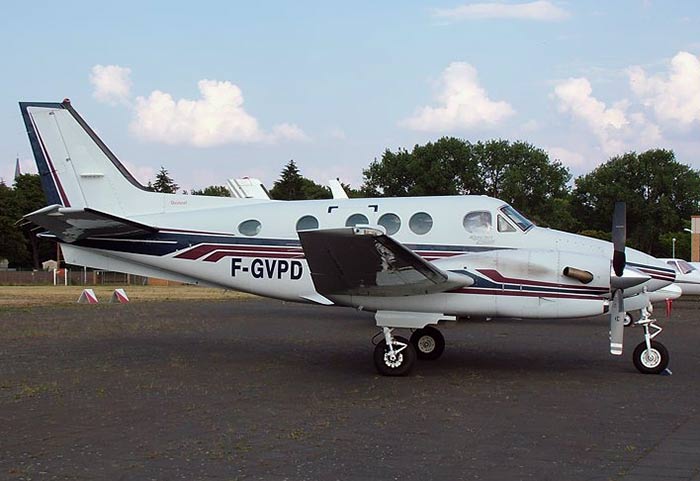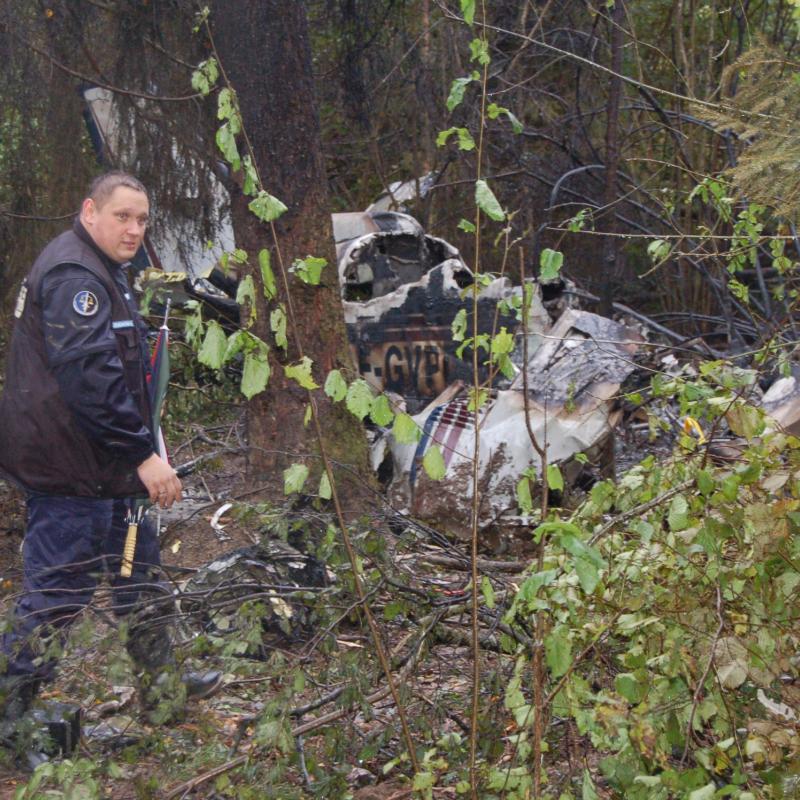Country
Crash of a Beechcraft C90B King Air in Besançon: 4 killed
Date & Time:
Oct 19, 2006 at 0042 LT
Registration:
F-GVPD
Survivors:
No
Schedule:
Besançon – Amiens
MSN:
LJ-1321
YOM:
1992
Crew on board:
2
Crew fatalities:
Pax on board:
2
Pax fatalities:
Other fatalities:
Total fatalities:
4
Captain / Total hours on type:
450.00
Aircraft flight hours:
3501
Circumstances:
The twin engine aircraft was engaged in an ambulance flight from Besançon to Amiens with 2 surgeons, one pilot and one operator agent. Following a course of 950 metres on runway 23 at Besançon-La Vèze Airport by night, the aircraft lifted off. With a low climb gradient, the aircraft collided with trees and crashed in a wooded area located 250 metres past the runway end, bursting into flames. The aircraft was totally destroyed and all four occupants were killed. Both surgeons were en route to Amiens in order to a lever harvesting.
Probable cause:
The lack of flight recorders made it impossible to trace the chain of events on board the aircraft. As a result, the causes of the accident could not be determined with precision. However, at least two scenarios could simultaneously explain the length of the takeoff roll and the low height after rotation: a lack of control of the airplane by the pilot, either by poor adjustment of the elevator trim or because his attention would have been focused inside the cockpit by any event, without reaction from the pilot passenger seated on the right. This scenario is consistent with his relative inexperience with the type of aircraft. The second scenario could be based on an inappropriate decision to seek significant speed after take-off or improvised instruction, neither pilot being aware of the obstacle constraints of the airfield. The significant obscurity, the operating specificities in medical transport and the presence of a second pilot with a status and role not provided for in the operations manual, without there being therefore any crew or distribution of tasks within the company's crew, are likely contributing factors. The 48-year-old pilot had a total of 3,500 flight hours, including 450 on type. The company agent who was seating on the right was a professional pilot who did not have a license on this type of aircraft and took advantage of the flight, in agreement with the corporate management, to acquire experience in a view to his future qualification on this type of airplane. He had a total of more than 4,000 flight hours.
Final Report:


Crash of a Beechcraft A90 King Air in Tampa: 1 killed
Date & Time:
Jun 12, 2006 at 1235 LT
Registration:
N7043G
Survivors:
Yes
Schedule:
Sarasota - Tampa
MSN:
LM-37
YOM:
1967
Crew on board:
2
Crew fatalities:
Pax on board:
0
Pax fatalities:
Other fatalities:
Total fatalities:
1
Captain / Total hours on type:
457.00
Copilot / Total hours on type:
44
Aircraft flight hours:
15671
Circumstances:
The first officer reported that during cruise flight, both propeller secondary low pitch stop (SLPS) lights illuminated, indicating the SLPS system prevented both propellers from going below the low pitch hydraulic mechanical stop. The right occurred first, then the left approximately 1 minute later. Emergency procedures to correct the condition were ineffective. The right propeller feathered at some point during the flight, and the first officer reported that while operating single engine, they experienced a problem with the propeller governor. The flight proceeded direct to an airport with short runways approximately 3.2 nautical miles (nm) northwest of their present position, rather than to an air carrier airport located 8.5 nm away. The captain entered a close-in right base to runway 35 (2,688 feet long runway), while flying at 155 knots (51 knots above single engine reference speed). He turned onto final approach with the landing gear and flaps retracted, but overshot the runway. The airplane contacted a taxiway near the departure end of intended runway, and then collided with several obstacles before coming to rest at a house located past the departure end of runway 35. A post crash fire consumed the cockpit, cabin, and sections of both wings. Post accident examination of the airframe, engines, and propellers revealed no evidence of preimpact failure or malfunction. No determination was made as to the reason for the annunciation of both SLPS lights.
Probable cause:
The poor in-flight planning decision by the captain for his failure to establish the airplane on a stabilized approach for a forced landing, resulting in the airplane landing on a taxiway near the departure end of the runway. Contributing to the accident were the failure or malfunction of the primary hydraulic low pitch stop of both propellers for undetermined reasons, the excessive approach airspeed and the failure of the captain to align the airplane with the runway for the forced landing.
Final Report:
Crash of a Beechcraft E90 King Air in New Roads: 5 killed
Date & Time:
Jun 23, 2005 at 1900 LT
Registration:
N62BL
Survivors:
No
Schedule:
Jonesboro – New Roads
MSN:
LW-272
YOM:
1978
Crew on board:
1
Crew fatalities:
Pax on board:
4
Pax fatalities:
Other fatalities:
Total fatalities:
5
Captain / Total hours on type:
1790.00
Aircraft flight hours:
7166
Circumstances:
A 4,000-hour multi-engine private pilot lost control of the airplane while performing a go-around maneuver. The airplane subsequently pitched up, stalled and impacted a corn field in a nose low attitude where a post-impact fire ensued. Communications data and radar data compatible with the Radar Audio Playback Terminal Operations Recording (RAPTOR) program was used to plot the airplane's flight path on a topographical map. The plots appeared to indicate the airplane was on final, left of the extended runway 36 centerline. Detailed post-accident examinations of the airframe, engines and propellers were conducted and no anomalies were noted.
Probable cause:
The pilot's failure to maintain airspeed and subsequent loss of control during a go-around maneuver.
Final Report:



